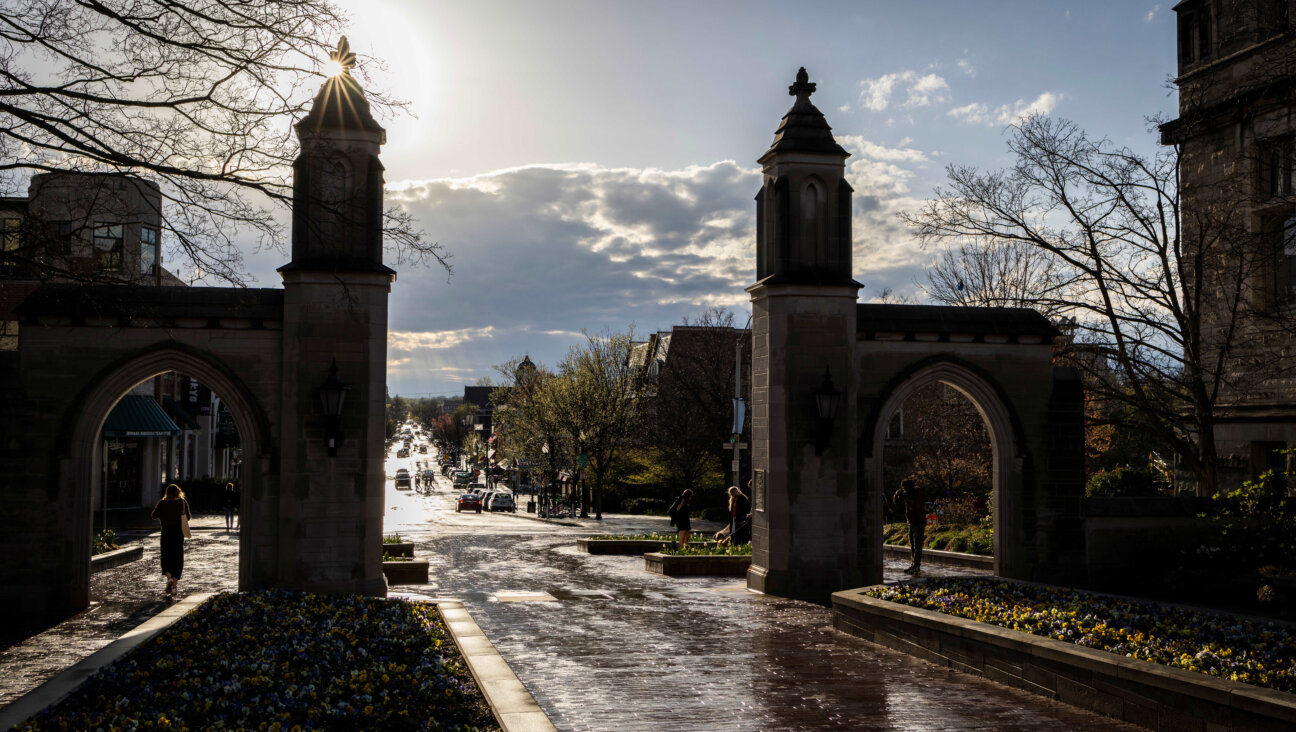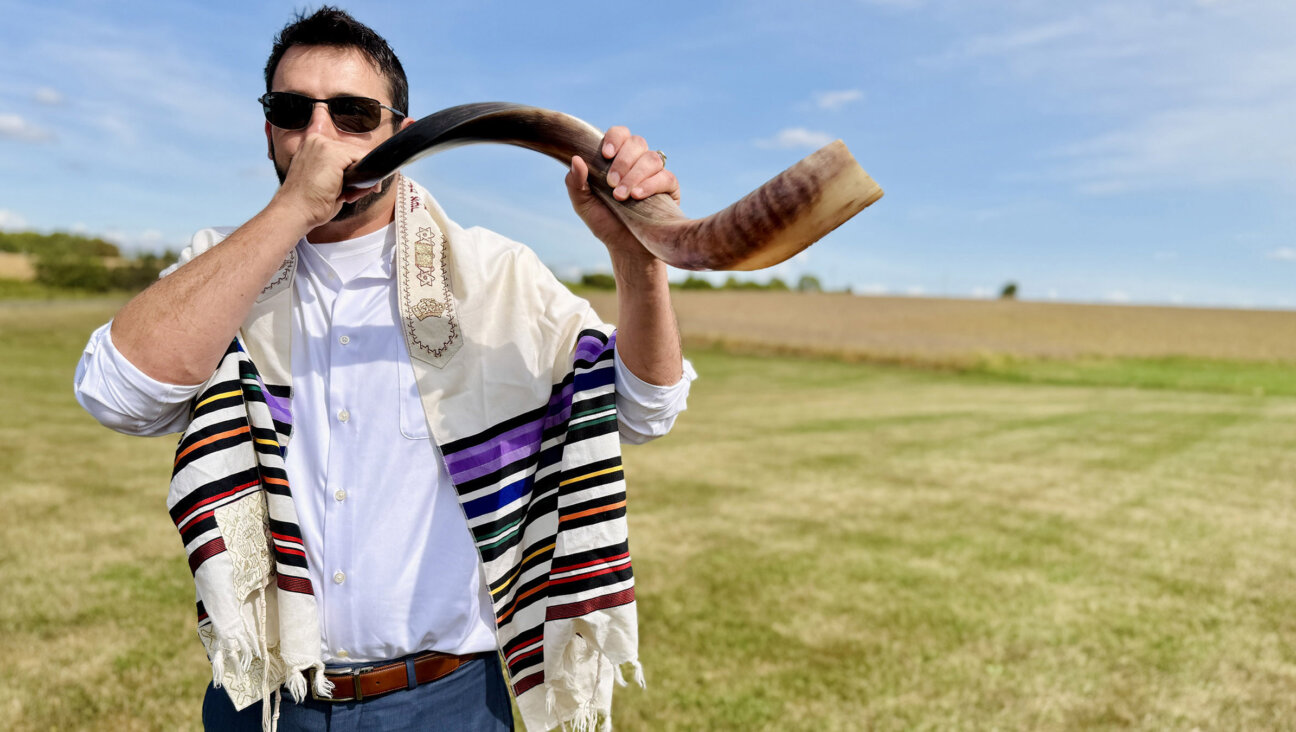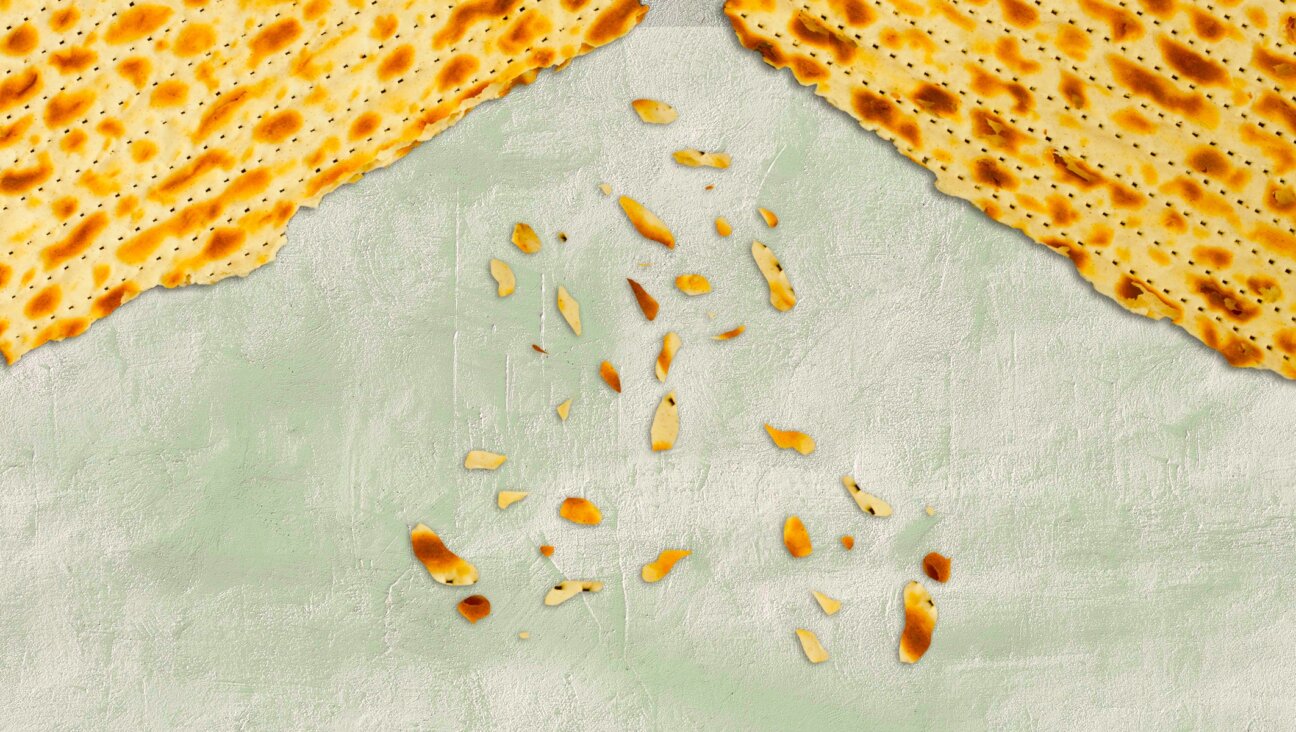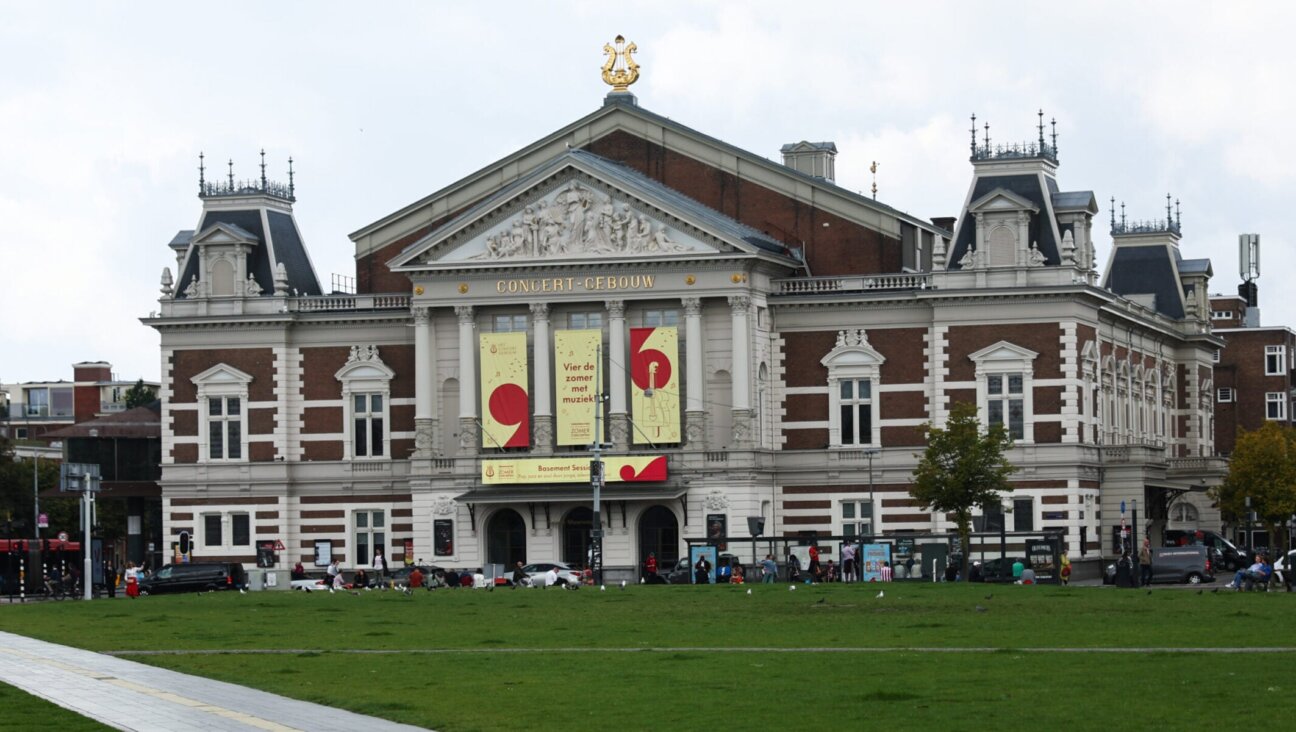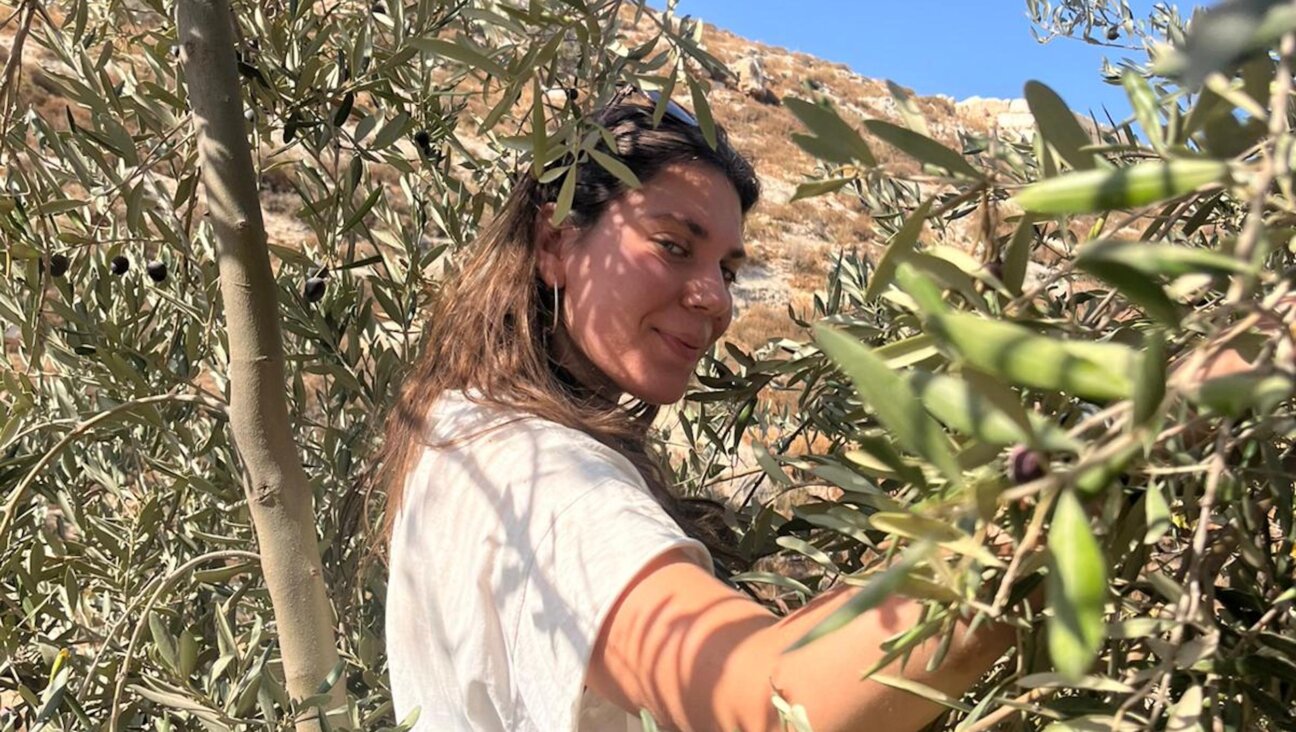Decades-Old Blood Libel Case Roils Town

Image by naomi zeveloff

Image by naomi zeveloff
The only recorded blood libel accusation against American Jews occurred in 1928 in Massena, N.Y., a small industrial town on the Canadian border that for the next 84 years never brought up the episode. But today, Debbie Fuehring, program director at Massena Public Library, is eager to show a visiting reporter the box of rugelach and mandelbrot she had shipped in specially for the library’s October Jewish history program. The delicacies will be served during the program, at which, for the first time, Massena will publicly discuss the blood libel affair.
“We want to educate the children and the people of Massena,” she said. “It’s good to be aware of intolerance.”
The public reckoning comes at an unusual moment in the town’s history. As it happens, Massena’s Jewish community, which traces its roots back to the 19th century, is liquidating its presence after years of shrinking membership. It’s a common story in America today. Jewish communities once proliferated across New England, the Deep South and even the Far West, as immigrant peddlers and shopkeepers found homes and acceptance, they thought, in the nation’s countless towns and villages.
Massena is no different from many of these towns. But here there is a twist, and questions that linger about the acceptance those Jews found.
With a population just shy of 13,000, Massena is the northernmost town in New York state, an hour and 45 minute drive from Montreal. Once an industrial center of the North Country, the town’s economy has contracted in recent decades due to the consolidation of two aluminum production plants and the closure of a General Motors Co. facility. Downtown Massena is now pocked with empty storefronts. The immigrant groups — Italians, Irish, French Canadians and Eastern European Jews — who once flocked there have largely disappeared.
The 1928 blood libel incident began on the eve of Yom Kippur, when a 4-year-old Christian girl named Barbara Griffiths disappeared into the woods adjacent to her home. The local fire department, which at that time included many active members of the Ku Klux Klan, organized a search for her. Meanwhile, a state trooper stopped off at a local diner owned by a Greek immigrant, who speculated that Griffiths was abducted by the Jewish community for ritual sacrifice on the holiday. The state trooper brought Rabbi Berel Brennglass in for questioning as an angry mob gathered outside. Brennglass famously dressed down the troopers and delivered a rousing sermon at synagogue that evening, at the Kol Nidre service.
The next day, Griffiths reappeared from the woods, unharmed. But the story had already traveled far beyond the town. Jewish newspapers printed screaming headlines: “Ku Klux Klan Throws Blood Libel on Jews of Massena NY,” proclaimed the Yiddish Morgn Zhurnal. The Forverts, this paper’s predecessor, described a near pogrom, with Jews “horrified and fearing for their lives.” And the Jewish Daily Bulletin published the story on its front page, alongside reports on a synagogue plundering in Berlin and attacks on Jews at the Wailing Wall.
At the behest of Louis Marshall of the American Jewish Committee, Massena Mayor Gilbert Hawes issued an apology, but he rejected calls by prominent Jewish leaders in New York City for his resignation. Meanwhile, Marshall and Rabbi Stephen S. Wise, his great rival for leadership of American Jewry, treated the incident as a political football as they struggled to outdo each other.

Sold: Judy Witek, left, and Lenore Levine stand in front of the synagogue in Massena that was sold for $1 to the town?s chamber of commerce. Image by naomi zeveloff
Back in Massena, some historical accounts say that the incident subsided quickly and that friendly relations between Massena’s Jews and gentiles resumed. But others contend that the antagonism continued unabated for weeks, culminating in a boycott of Jewish businesses led by the mayor. Ab Cahan, the Forverts’ legendary editor, condemned the boycott, but called on Jews to refrain from punishing the mayor further, because “it would create the impression that Jews are vengeful.”
Today, Massena’s Jewish community has dwindled to about 10 people from its onetime high of 20 families. The Jewish-owned businesses that used to line Main Street in downtown Massena — Clopman’s, Levine’s, Slavin’s and others — have all closed. Long without a minyan, the Adath Israel synagogue was sold to the Massena Chamber of Commerce earlier this year for $1. The only Star of David remaining in Massena is the metal one atop the gate to the local Jewish cemetery. Six years ago, someone placed a hula hoop atop the star and spray painted a swastika on the asphalt below. It is evidence, some say, that anti-Semitism still abounds in the St. Lawrence River Valley
The public library’s belated remembrance of the blood libel incident finds the small community in turmoil. Massena’s Jews are deeply divided over the fate of the synagogue building and the tallitot, prayer books, and Torah scrolls it once housed. The library series is also a source of contention; some Jews see it is an opportunity to educate Massenans about anti-Semitism and intolerance. But others would rather forget about the event — a moment of friction in an otherwise placid small-town history of gentiles and Jews.
At stake in both cases are the community’s memories. As Jewish life in Massena sputters out, the remaining individuals are waging an internecine battle over the story that Massena’s Jews will tell about themselves — and that the town will remember about its signal moment on a national stage.
In the Massena area today, there are only two people alive with direct ties to the blood libel incident. One is Barbara Griffiths Klemens, the onetime 4-year-old girl, now 88, who disappeared into the woods. The other is Harry Clopman, a 97-year-old World War II veteran with a full head of white hair. His family furniture store, Clopman’s, went out of business last summer, the last of the Jewish storefronts to disappear from downtown. Clopman lives in a one-story home across the street from the St. Lawrence River, the dividing line between the United States and Canada. Sitting forward in a recliner in his wood-paneled living room, he told me that the library is making a mountain out of a molehill with its remembrance of the blood libel.
“It was something we wanted to go away,” said his daughter, Miriam Catapano, who was sitting across the room. “There was no reason for it to be constantly brought up.”
After Barbara Griffiths went missing, Clopman said, he joined the search party for her rescue, but left early to go to Yom Kippur services. He heard nothing of the blood libel rumor until Brennglass arrived at Adath Israel “all excited”: He had just been questioned by law enforcement. “The rabbi gave them a good tongue lashing,” said Clopman, who was 13 at the time. “It was forgotten after that.” No Jewish businesses were searched for the Griffiths child, nor were they boycotted in the ensuing weeks, he said.
Clopman said he felt sorry for the Massena mayor, whom he believes was raked over the coals by the New York Jewish establishment. “That man was never the same after that,” he said.
Clopman blames a 1978 book, “The Incident at Massena,” for turning a local skirmish into a Jewish historical event. The book was written by Saul Friedman, a professor of Jewish history at Youngstown State University, in Ohio, who first read about the blood libel incident in an endnote in “The Devil and the Jews” by Joshua Trachtenberg. “The Incident at Massena” portrays the blood libel affair as the inevitable outcome of “mesozoic hatreds” against Jews and other outsiders in Massena. “All that was needed to release this pent-up fury was an excuse,” Friedman writes.
But “The Incident at Massena” is hardly accepted as unqualified truth in Massena. Local critics often refer to a book review by Sam Jacobs, a Jewish entrepreneur who died last year. Writing in Judaism, a now defunct quarterly journal, in 1979, Jacobs suggested that Friedman had sensationalized the event by painting a picture of “a village seething with mass hysteria.” The author made “no real attempt to sift through and evaluate the information; much of it may have been hearsay or worse,” he wrote. As far as Clopman is concerned, the book is a “bunch of damn lies.”
Friedman was unable to respond due to his advanced age.
But for other Massena Jews, the book’s more dramatic elements ring true. Shirley Reva Vernick, who grew up in Massena but now resides in western Massachusetts, learned about the incident from her father, who was a teenager at the time. “State troopers came to my grandfather’s house late at night and made him go downtown and open his store so they could see if the corpse of Barbara Griffiths was stashed there,” she said. Even after the girl was found, many suspected that the Jewish community released her when they realized the state police were on the case. “My father and his five siblings experienced harassment, jeering,” she said. Parents began accompanying their children to school. “At least one family moved away,” Vernick said.
Last year, Vernick published a fictional account of the incident, “The Blood Lie,” that hews closely to her family’s version of the event. The young adult novel was the inspiration for the Massena Public Library’s month-long series on Jewish life. The series, which includes a performance by a Vermont klezmer band and a screening of “Fiddler on the Roof,” culminates on October 25 with a public discussion of Vernick’s book. Three hundred copies of “The Blood Lie” were distributed in Massena; the book is now part of the English literature curriculum at public schools in the area.
In mid-October I went to the Massena Public Library to meet with Judy Witek and Lenore Levine, two of the three board members of Congregation Adath Israel, which donated $5,100 for the library’s month-long series. Levine, a nurse at Massena Memorial Hospital, is Vernick’s sister. Witek works as a teacher’s aide in the local high school; she is a relative newcomer, who moved to Massena in 1987. The third board member is Miriam Catapano, Harry Clopman’s daughter.
We walked through the library’s display on Jewish history, a kind of Judaica potpourri that included a candelabra from Adath Israel, and several short towers of Jewish books and DVDs: “On Being a Jewish Feminist” sat near “Thou Shall Prosper: Ten Commandments for Making Money” and Holocaust survivor Elie Wiesel’s memoirs. Before Jewish history month in Massena, Jewish books were almost never checked out, Fuehring told me, but now they were flying off the shelves. In the main room of the library were four boards featuring articles and photographs about Massena in the 1920s, information about the 1928 incident and about Vernick’s book, and a printed Wikipedia entry for the term “blood libel.”
“My feeling was, Shirley had written a book that is very relevant in today’s world,” Witek said, explaining the synagogue’s support for the series. “People can be swept up in emotions of hate. It is important that students read about this event.” Levine chimed in: “It’s a nice opportunity to educate people.”
As Levine and Witek back the library’s tribute to Massena’s Jewish history, they are simultaneously liquidating the local Jewish community’s assets. Since 1919, Congregation Adath Israel was housed in a red brick building, a former congregational church, on the corner of Church and West Orvis streets. But over the years, children of Jewish families moved away from Massena, and the congregation diminished. With no rabbi or regular Sabbath services, Adath Israel hired student rabbis from Hebrew Union College-Jewish Institute of Religion, in Manhattan, to lead holiday prayers. Then in 2007, lightning struck the Emmanuel Congregational Church across the street, and Adath Israel temporarily hosted its Sunday services.
Six years ago, the Adath Israel board decided that maintaining the building without an active congregation wasn’t worth the cost, so it put up the synagogue for sale. Several promising prospective buyers fell through. Finally, the board sold the building to the Chamber of Commerce in July for a nominal fee of $1. “By that point in time, we literally had no congregation,” Levine said. Adath Israel isn’t the only North Country synagogue to have shut its doors recently; a handful of others have closed as well.
But even with the sale, Witek believes, the Jewish community’s presence in Massena will be preserved. “My feeling is, as long as the building is there, it is a representation of the Jewish community,” she said.
The board also discharged the synagogue’s assets. The three Torah scrolls were donated to synagogues around the region. Silver trays and tea sets were returned to the families they originally belonged to. The metal letters that spelled out “Adath Israel Synagogue” were placed in a box in Levine’s basement. The synagogue in nearby Potsdam, Congregation Beth El, hung Adath Israel’s memorial board in its main hall, promising to light up the bulbs on the appropriate yahrzeits. A few of Adath Israel’s members who were well enough to make the 30-minute drive to Potsdam began attending Friday night services there.
The dissolution of Adath Israel is a sore point among some remaining Jews in Massena. I met with Doris Robinson, a 78-year-old retiree, and Michael Slavin, a local real estate agent, at the library where, months before, members of the Jewish community voted to turn over the synagogue building to the Chamber of Commerce.
Slavin is the great-grandson of Louis Slavin, one of the first Jews in Massena. The elder Slavin made a living selling clothing and boots to workers at the Aluminum Company of America, which is still one of the largest employers in town. (Local Jews and even the mayor are quick to mention that ALCOA didn’t hire Jews during its early years in Massena.) When the blood libel rumor spread through Massena, Michael Slavin’s father, then a teenager, kept a 24-hour vigil at Adath Israel; he later went on to found the first B’nai B’rith chapter in town. A barrel-chested man with a heavy gold ring on his finger and a Masonic pin fastened into the buttonhole of his jacket, Slavin fumed over the synagogue sale, which he said was executed without sufficient input from the broader Jewish community.
He contends that the board “gave, pilfered, or stole the contents of the Jewish community.” The Torah scrolls, including one that his great-grandfather carried from Russia, “were given away with no transparency…They were going to bury all the yarmulkes,” he said. “It’s something that was done in the olden days. But today there are Jewish congregations that need that.”
Witek and Levine counter that they consulted with rabbis and members of the local community before dissolving Adath Israel’s property. Some dilapidated tallitot and moldy prayer books were buried, they concede, unusable by another congregation. “We held on as long as we could, and we put the best care we could into the things the community had to deal with, and we moved on,” Witek said.
But Slavin is adamant. “There’s a right and there’s a wrong,” he said. “And this is a wrong.”
One of the synagogue’s assets, a stained-glass window panel, now belongs to the daughter of Barbara Griffiths Klemens, the onetime four-year-old who wandered off into the woods 84 years ago. Klemens’ daughter brought her to Adath Israel in August when the Chamber of Commerce was auctioning off items that remained in the building’s basement. It was the first time Klemens had set foot in the synagogue where the Jewish community gathered in fear of being blamed for her disappearance.
Today, Klemens lives with her husband on a tree-lined street in Canton, a village 45 miles from Massena. Trim with a gray bob and a round face, Klemens ran a yarn store from her home for decades. We sat down at a card table in her living room, where she had played bridge the night before with several friends from the neighborhood.
“I don’t remember anything directly,” she said. What she can recall comes from stories her family told her and the articles and books she read over the years. On that day in September, her mother sent her outside to call her brother, who was collecting twigs for slingshots, and bring him home for a lollipop. Klemens couldn’t find him, and walked into the woods herself. She eventually fell asleep, oblivious to the search crew calling her name. (Some accounts from the time speculate that she did hear them, but was afraid.) The next morning, she stumbled into a street where she encountered two girls who were thumbing a ride to nearby Raymondville. She vaguely remembers how the girls looked. “They were girls with curls,” she said.
Klemens eventually left Massena to study physics in Albany. She worked for a year in the state health laboratory, mixing vaccines for whooping cough. She and her husband returned to the North Country 66 years ago. Klemens is the mother of three children, one of whom is now deceased. She has six grandchildren, and one great grandchild.
I asked Klemens if she ever felt bad for her part in the blood libel incident. She said she felt sorry for her mother, who must have been worried sick. Her mother was pregnant at the time that Klemens disappeared, but something — Klemens can’t quite remember what — happened to the baby. Her mother might have miscarried because of a blood clot.
Before I left, Klemens showed me a manila folder filled with newspaper clippings about the blood libel incident, dating back to 1928. “Tot Tells of Night in Wood,” “Missing Girl Is Found Safe,” “Four-Year-Old Child Lost in Woods Twenty-Four Hours.” I asked her why she saved them.
“Anything about the family, I save it,” she said. “Probably, mostly, because it’s about me.”
Contact Naomi Zeveloff at [email protected] or on Twitter @NaomiZeveloff




